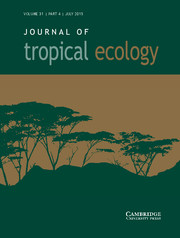There are countless and varied unexpected things that Google Maps allows us to discover - from a mobster on the run at China's Area 51, to the wreckage of MH370, a mysterious object submerged off the coast of Greece or a mysterious pyramid in Mexico.
Recently, another strange object was captured by Google Maps in the middle of the Pacific Ocean: a huge black hole.
The image, which can be found at coordinates -10.0667138,-152.3121475, appears to show a ridge surrounding a terrifying black hole, which apparently plunges deep into the Earth.
Conspiracy theories soon emerged to explain the strange formation. Some, says Metro, suggest that it's a blurry image of a military base on a deserted Pacific island.

Others, more imaginative, point out that this hole is at the antipodes of the mythical Bermuda Triangle. "Is that where the things that disappear" come from on the other side?
The mysterious hole is indeed on the other side of the world, but ZAP has calculated the distance between the coordinates of the antipodes of the midpoint of the Bermuda Triangle (25.4°S 109.5°E) and the center of the black spot (10.3°S 152°W). Well, that's a good 10,000 kilometers...
But the reality is, unfortunately, much more frightening.
The "black hole" is actually a dense forest of Pisonia grandis trees, an angiosperm of the Bougainvillea family, on the remote island of Vostok, about 640 km northwest of Tahiti.
This island is apparently as beautiful as the Tahitian tropical paradise - but also deadly, precisely because of its forest.
Pisonias are known as "bird killers" and they even keep the evidence of their crime tangled in their dense canopies: the bones of their winged victims. As a murder weapon, these deadly trees use their super-sticky seeds.
Normally, trees spread their seeds using a variety of methods. They often use the wind to carry them, or wait for animals to eat them and "deposit" them elsewhere.
But on a tiny island like this, there's no room for the seeds to spread, and the trees need a more radical solution.
The Vostok pisonias have developed sticky seeds, which stick to the seabirds nesting on the remote island, and which, the trees hope, will fall off a long time later on a different island.
However, the seeds are so sticky that the birds can end up getting completely entangled in them, and their weight often prevents them from taking off.
In more dramatic cases, the birds become entangled in the seeds and completely resinated, starving to death, their mummified corpses hanging from the trees.
These "bird-killing" trees can have a devastating impact on bird populations.
A study conducted in 2005 by Canadian biologist Alan Burguer on Cousin Island, in the Seychelles, which has a forest of pisonias, and published in the Journal of Tropical Ecology, concluded that these trees killed a quarter of white terns and almost a tenth of tropical shearwaters.

According to the study, there doesn't seem to be any evolutionary benefit to the sticky seeds of the "bird-catcher" trees - which don't receive additional nutrients as the birds decompose in the soil, nor are the seed-covered corpses dragged to neighboring islands.
"The extreme viscosity of the seeds has evidently evolved to resist removal by seabirds, thus facilitating long-distance dispersal," writes Alan Burger in Nature Seychelles.

Thus, the mysterious black hole in the middle of the Pacific is actually a gloomy graveyard of unfortunate seabirds, trapped by sticky seeds eager to spread the species of killer trees that populate an islet.







